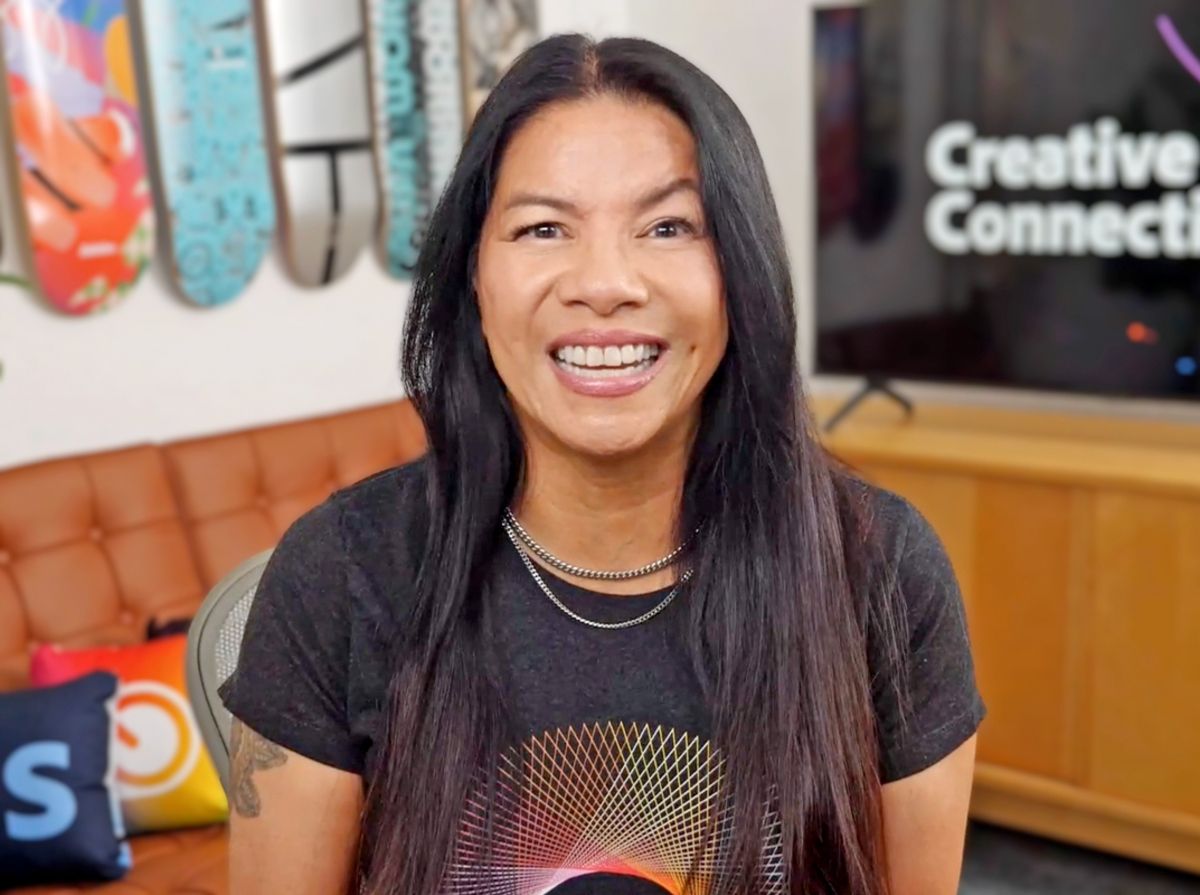It’s November 2018, and I’m live on camera, hosting the finale of the Greater Toronto Area Adobe Creative Jam LIVE. Students from George Brown, Ontario College of Art & Design University, Sheridan, and Humber Colleges are logged into our hybrid event, and it was the first time bringing together design students who’d never met each other before.
Up until this point, I’d been emceeing these virtual events for single teams, classrooms, and tight-knit groups who already shared inside jokes. This was uncharted territory. Strangers from different schools, all about to present their teams’ app prototypes they’d built in Adobe XD during the challenge, live-streaming from their respective schools and classrooms.
Picture the scene: four different schools, four different energies, all connected by pixels and possibility.
The chat window explodes with pre-presentation nerves, last-minute XD questions, and that rapid-fire commentary that moves like digital confetti. Students are prepping to share their work with peers they’ve never met. There’s something electric about watching creative minds prepare to get on camera and be vulnerable in front of strangers.
And then one student hits a wall—the Adobe XD nightmare scenario where your prototype breaks right before you’re supposed to present it. I can see their panic through the screen, that universal designer horror of watching hours of work seemingly vanish. I’m mentally scrambling how to troubleshoot on air without derailing the spectator experience.
But before our tech director, David, can even unmute me, something beautiful unfolds.
A George Brown student jumps into the chat with an XD-specific fix. And then someone from OCAD offered an additional workaround: the kind of generous specificity that only comes from someone who’s debugged that exact Adobe nightmare at 2 AM. Within minutes, the crisis was averted. Presentation saved.
And here’s the thing that made my host heart flip: these kids had never met each other before.
Just strangers who happened to speak the same design language, seeing another designer struggle and instinctively reaching out their hands.
The Lightbulb Moment
That moment stuck with me.
I’d been thinking backwards. Instead of designing these competition events for Adobe’s customers, I should have been designing events around their community.
Because community isn’t a nice-to-have byproduct of good events—it’s the engine that makes everything else work. When people feel connected to each other, they stay engaged longer, share more freely, and keep the conversation going long after you’ve closed the venue doors or logged off.
Since that afternoon, I’ve flipped my design process entirely. Instead of asking “What content should we create?” I ask, “What connections do I want to enable?” Instead of “How do I keep people engaged?” I ask, “How do I help them engage with each other?”
This is Community as Strategy, not Sentiment
And here’s the best lesson: the most successful events don't create community. They activate it. They take what already exists—shared struggles with Adobe XD, mutual dreams of design careers, the inside jokes that only happen late at night in the computer lab—and turn the volume up.
Design for peer-to-peer learning, not just expert-to-audience teaching. Create spaces for people to share their wins and their struggles, those “wait, how did you do that?” moments that spark real connection. Build in opportunities for them to be the heroes of each other’s stories.
Most event hosts have it backward: we treat the community like the cherry on top when it should be the cake itself.
When you design around community first, everything else falls into place. Engagement isn’t something you manufacture; it emerges. Retention isn’t something you optimize for; it just happens naturally. People don’t solely attend your events; they become invested in each other’s success.
The difference between audiences and communities:
An audience watches your show. A community participates in each other’s growth.
An audience consumes your content. A community creates value together.
An audience shows up for you. A community shows up for each other.
And that last one? That’s where the magic lives.
The Ripple Effect
The students from that Creative Jam event? Some are still connected years later. Still sharing opportunities, celebrating wins, and offering that same generous problem-solving they showed that November night. I know because I see them interact on LinkedIn.
They created something that outlasted my event by years, because I finally understood that my job wasn’t to be the star of the show. It was to build a stage where they could shine for each other.
So here’s your homework: Look at your next event, workshop, or gathering. Before you book speakers or pick platforms, pause. Start with your people. What do they already share? What sparks already exist between them? What connections are waiting to be amplified?
Then build your show around that.
Because community isn’t just a feeling. It’s a strategy. And when you get it right, you don’t just host successful events—you create movements that sustain themselves.
P.S. I’m curious—have you ever witnessed your community surprise you by showing up in ways you never expected? Comment and tell me about it. I collect these stories like other people collect vintage postcards.
